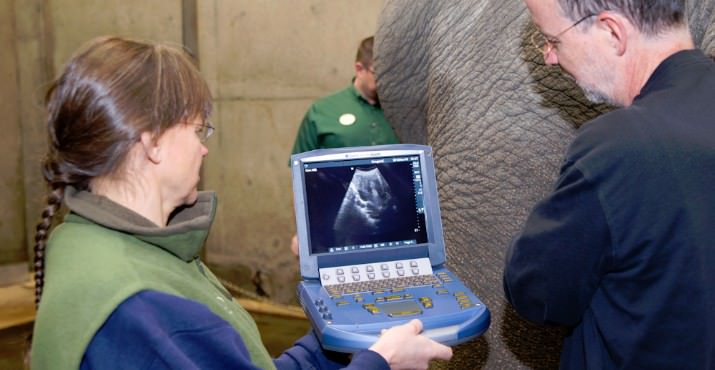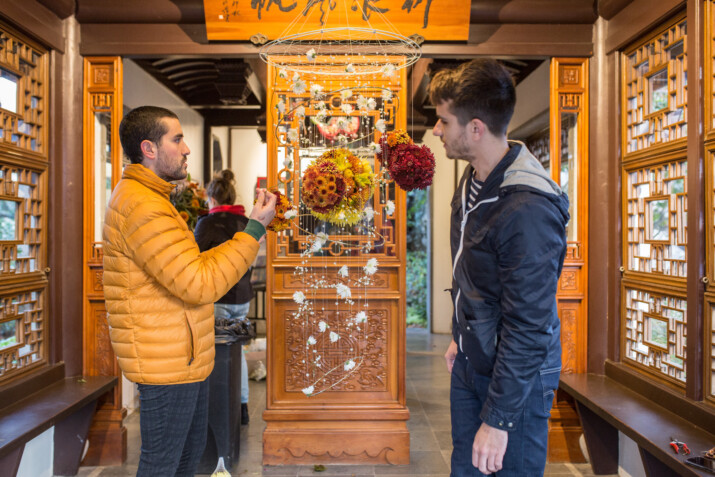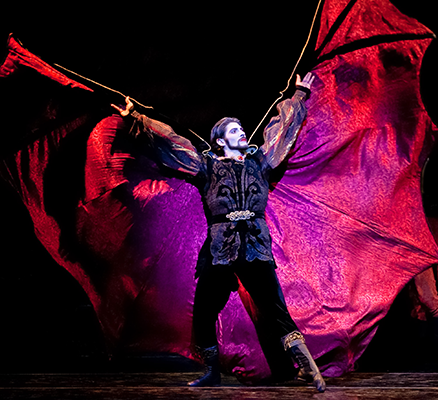Portland, November 19th. Being the doc on call when an elephant goes into labor is not a job for the faint-hearted. Mitch Finnegan, the zoo’s senior veterinarian, knows: He was present 18 years ago at the birth of Rose-Tu, and four years ago at the birth of Samudra, her first calf at the Oregon Zoo.
“That last birth easily took a year off my life,” Dr. Finnegan said. “I hope this one goes easier.”
Samudra, born Aug. 23, 2008, had a rough start to life. Topping 280 pounds at birth, he was a large baby, which contributed to a long and difficult labor for Rose-Tu. Rose-Tu, who had never experienced a birth before, became confused and agitated after delivering her baby, which can happen with first-time mothers. Keepers quickly intervened to prevent any harm to the baby. They then worked around the clock during the calf’s first week of life to help ensure the critical mother-calf bond became a strong one.
“Rose had never experienced a birth before, so we think she may have been confused by what was happening,” Finnegan said. “She was the last elephant born at the zoo until her own calf arrived. This time, we think things will go much better.”
Still, with Rose-Tu just weeks — perhaps days — away from giving birth again, Dr. Finnegan and the rest of the zoo’s elephant-care team are doing their best to make sure they’re ready for anything.
“We’re expecting the best and preparing for the worst,” Finnegan said. “We’ll have several carts of equipment and hopefully we’ll use none of it.”
Last week, emergency medical supplies were assembled at the elephant barn in preparation for the birth. Medications are on hand in case labor needs to be induced. Oxygen is available in case the newborn calf shows any signs of difficulty breathing.
There can be complications to both mother and calf, according to Finnegan. One major risk to both is dystocia, or a difficult labor. Elephants are prone to a form of dystocia in which their labor stalls, requiring veterinarians to administer medications to stimulate the uterus in order for labor to continue.
But such a move brings another risk.
“Normally, elephants are delivered rear feet first,” Finnegan said. “In very large animals like elephants, it’s sometimes difficult to know whether the calf is positioned normally. Palpation and ultrasound are our best tools, but they provide relatively limited information in elephants compared to smaller animals like horses or dogs. The risk is that if drugs are used to stimulate labor and the baby is malpositioned, intense contractions could tear the uterus. Since we often don’t have all the information we would like, it can be a harrowing experience if labor does not progress normally and medical intervention is necessary.”
Ultrasound, Finnegan says, offers too small a field of view, so he relies on an age-old, hands-on veterinary approach. If labor stops progressing, he will examine Rose-Tu, feeling inside her for the calf’s feet and toes, so he can determine how best to help labor proceed.
But if labor proceeds normally, Finnegan will keep out of Rose-Tu’s sight.
“Ideally we’ll leave her alone and only have people in the barn that she’s really comfortable with,” he said. “As much as possible, we want it to be just another day for her. Animals are very good at sensing our emotions and stress, so we want everyone to be upbeat and mellow.”
For months, the zoo’s elephant-care staff has been working with Rose-Tu to ensure she is calm, comfortable and confident on the big day. All that training and preparation — along with Rose-Tu’s own experience as a mother, the presence of other elephants and the staff who has cared for her for years — give Rose-Tu the best possible chances for the outcome everyone is hoping for: a healthy, strong calf.
The Oregon Zoo is recognized worldwide for its successful breeding program for Asian elephants, which has now spanned 50 years. Rose-Tu’s mother, Me-Tu, was the second elephant born at the zoo (just months after Packy in 1962), and her grandmother, Rosy, was the first elephant ever to live in Oregon.
Asian elephants are considered highly endangered in their range countries, threatened by habitat loss and conflict with humans. According to estimates, fewer than 40,000 may remain in fragmented populations from India to Borneo.
The Oregon Zoo is an accredited member of the Association of Zoos and Aquariums, whose species survival plan for Asian elephants is striving to establish a self-sustaining population in North America.
The zoo is a service of Metro and is dedicated to its mission of inspiring the community to create a better future for wildlife. Committed to conservation, the zoo is currently working to save endangered California condors, Oregon silverspot and Taylor’s checkerspot butterflies, western pond turtles and Oregon spotted frogs. Other projects include studies on Asian elephants, polar bears, orangutans and giant pandas. The zoo relies in part on community support through donations to the Oregon Zoo Foundation to undertake these and many other animal welfare, education and sustainability programs.
The zoo opens at 9 a.m. daily and is located five minutes from downtown Portland, just off Highway 26. The zoo is also accessible by MAX light rail line. Visitors who travel to the zoo via MAX receive $1.50 off zoo admission. Call TriMet Customer Service, 503-238-RIDE (7433), or visit www.trimet.org for fare and route information.
General zoo admission is $10.50 (ages 12-64), $9 for seniors (65 and up), $7.50 for children (ages 3-11) and free for those 2 and younger; 25 cents of the admission price helps fund regional conservation projects through the zoo’s Future for Wildlife program. A parking fee of $4 per car is also required. Additional information is available at www.oregonzoo.org or by calling 503-226-1561.
Information submitted by Hova Najarian
















